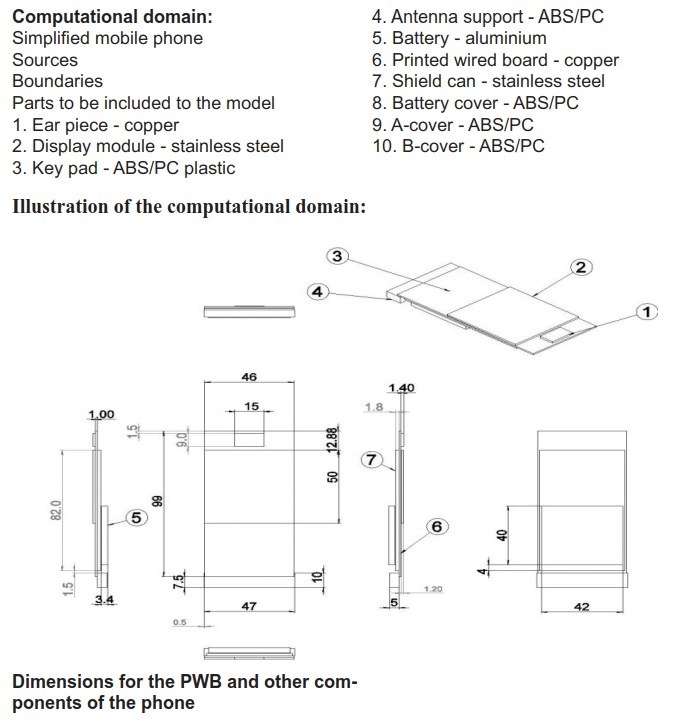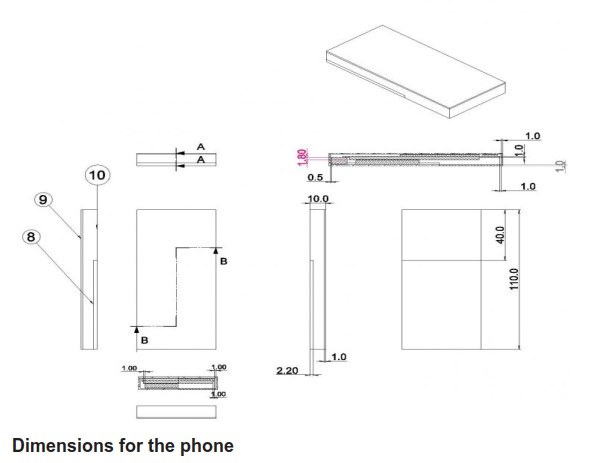MDO of Mobile Phone: Antenna, SAR, HAC and Temperature (Nokia)
This benchmark is originally developed by Nokia. The objectives of this benchmark are to maximize transmitted power of two GSM bands and at the same time minimize E-fields around ear piece for hearing aid compatibility. Also minimize SAR values to human head.
Requirements:
Realistic phone model (template given size and “must” use modules, as display, battery, antenna volume, etc.) with realistic materials.


Modeling: physical properties:
- Antenna performance:
o Antenna matching
o Total Radiated Power (TRP)
- Hearing Aid Compatibility (HAC - Category M3)
o E-fields above earpiece from specified height and area
- SAR (human head)
- Surface temperature of keypad
Boundary and/or initial conditions for computations:
- Case 1:
o Antenna and HAC optimisation
- Case 2:
o Antenna, HAC, SAR and Thermal optimisation
Optimization:
- Antenna bandwidth in 850/900MHz and 1800/1900MHz bands
- S11 of antenna feed
- Minimise E-field for HAC
- Minimise SAR values
- Minimise temperature on keypad
Design parameters:
- Antenna element dimensions
- Grounding points of mechanical structure
- Dimensions and groundings of thermal conductor
Objective function definition:
- S11−6dB with in each band, 824−960MHz and 1710−1990MHz
According to ANSI C63.19-2006 standard
- E−field2661Vm@f960MHz and E−field841Vm@f960MHz on the earpiece area
- H−field08Am@f960MHz and H−field025Am@f960MHz on the earpiece area
- SAR16Wkg in human head (CTIA standard head model/TBD)
Conformity level
- Temperature of keypad 55C
- Temperature difference on display between any two points 10C
Results:
Antenna performance:
Total radiated power (TRP) in dBm and antenna efficiency in percentage.
Antenna matching:
2d-plot; x-axis for frequencey from 800MHz to 2000MHz, y-axis for S11 from -30 to 0 dB.
-
Defined by Jari Jekkonen, 2006.
